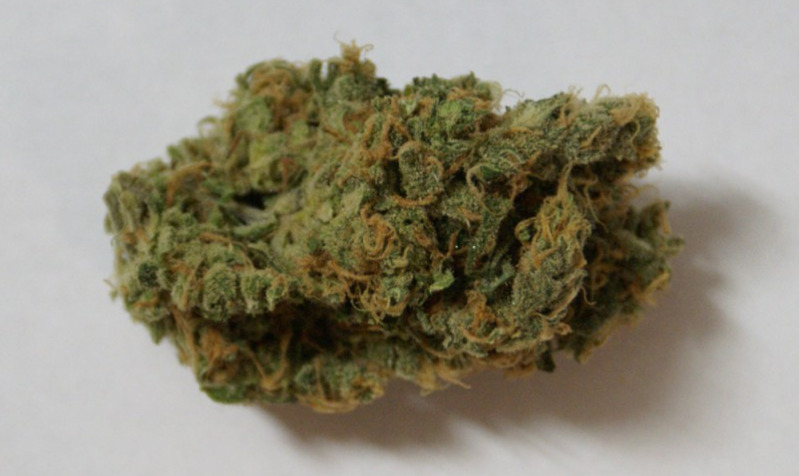A couple of years ago, I was a fresh college grad on an obligatory Eurotrip, crossing the Strait of Gibraltar, when a young Moroccan man approached.
“Hey man, you look like Snoop Dogg. Can I get a picture with you?”
At first, I was surprised. Even though I had heard it before, I always assumed it was a joke.
Of course I obliged. Unbeknownst to my newest fan, his observation was particularly apropos, considering I was on a short solo hashish pilgrimage to Tangier, Morocco.
Now that we all agree that my doppleganger is Calvin Broadus (a.k.a. Snoop Dogg a.k.a. Snoop Lion), you can understand why I was thrilled to find a gorgeous flower specimen of Snoop’s Dream grown and packaged by AuricAG of Seattle at Ganja Goddess in Seattle’s Industrial District (known by locals as SoDo).
I am, of course, a Denver native and work in the Colorado marijuana industry. But I happened to be in Seattle, speaking at the second annual Cannabis Grand Cru, and couldn’t resist the urge to explore the local recreational herb. I had a couple of hours to kill, so I took a field trip to the nearest marijuana store, as opposed to sitting in the hospitality lounge and dabbing all morning.
Snoop’s Dream by the numbers: $17/g, $32/2g, $53/eighth at Ganja Goddess (recreational), 3207 1st Ave S, in Seattle, Washington. Produced and processed by AuricAG of Seattle
When I first walked in, a friendly security guard checked my ID and asked if I had ever shopped there before. His eyebrows raised nearly an inch when I told him I was popping my I-502 cherry.
Ganja Goddess was substantially cleaner and more professional than many shops I’ve visited in Colorado. I started to browse like a 10-year-old in a baseball card shop. The layout of the products even matched the level of organization (or lack thereof) of your average card shop. I noticed many of the retail patterns with which I was familiar — plastic jars, vacuum-sealed bags, etc. — but no big jars of nug.
For those of you who are used to shopping in Colorado, Washington may seem bizarre, given that stores are not allowed to cultivate any of their own product. They are required to buy from state-licensed producers and processors who pre-package all products. As such, you are not allowed to inspect product beyond looking at it through the packaging, and in some cases, smelling a sample nug in a shaker jar (and display nugs don’t remain fragrant for very long). Despite the lack of inspection, Washington’s recreational laws make it easier to find a particular processor’s strain in many different stores, similar to edibles in Colorado. At Ganja Goddess, there were about 50 different strains from 10-15 producers.
Blue Dream is a favorite of mine and a legend in American cannabis circles — it even has its own Wikipedia page. So I was immediately intrigued when I saw that Snoop’s Dream is the product of crossing Blue Dream with Master Kush.
As with most strain theory, there are differing stories about genetic origin. According to Cannabist critic Ry Prichard, the Master Kush used in Snoop’s Dream is likely a separate strain from the Amsterdam Skunk #1 variety originally named High Rise and sold by Nirvana Seeds. Instead, it was probably bred in California, perhaps from a local phenotype of the original Sensi Seeds release. The Sensi version was created using two different varieties of Hindu Kush, a potent sedative landrace from the Central Asian mountain range of the same name. Like many landrace varieties from Asia, mountain dwellers originally bred Hindu Kush for its use in hash production. On the other side of the genetic equation, Blue Dream (critic Jake Browne’s favorite strain from 2014) provides a hybrid energetic body high created by crossing DJ Short’s indica Blueberry with a stimulating sativa Haze strain. I was distracted from the first whiff, wondering whether underdog sativa genetics could dominate the seemingly heavyweight indica family line.
At $17 per gram, Snoop’s Dream wasn’t the best deal (of course, a biased view due to Colorado prices), but it had a noticeable sweet, berry fragrance. After poking my nose into the perforated tops of a handful of jars of flower that smelled either like a ranch, an armpit or nothing at all, the price seemed significantly less important. The Blue Dream was the prominent profile, with hints of earth and spice, which makes sense given that many Master Kush varieties don’t have a particularly strong smell. At 22 percent THC, it wasn’t the highest on the shelf, but cannabinoid content is maybe the third or fourth factor I look at when buying flower.
It wasn’t until the next day that I actually had time to smoke. I tore open the vac-sealed bag and pulled out a dense, compact nug — dry enough that I could break it up with one hand, but not so dry that it crumbled at first touch. As with the smell, it looked more like a Blue Dream nug than Master Kush. With the natural sunlight beaming in through the window, a mixture of forest green and lime green was covered with an abundance of bright orange hairs and trichomes, creating the illusion that I was holding a small gold nugget. It left a slight resin on my fingers after I ground it up that required a hand-washing before I could proceed.
Coming off a month-long dab spree, I opted to roll up a small joint instead of a bowl while I waited for my friend and business partner, Maz, to finish up some contracts so we could head into the city for drinks.
Initially, the smoke left a subtle sweetness on my tongue almost like coconut water, but more citrusy. The taste went from the Blue Dream-like sweet fruitiness to earthy and piney on the back end. There was a slight spicy bite in the back of my throat on the exhale — the hashiness of the Hindu Kush ancestry.
After a couple of hits, I felt relaxed, and certainly more patient than I might otherwise be. By the time I was halfway through the joint, I was coughing and choking; for me, this is often indicative of potent flower. It wasn’t quite on the same level as the Seattle High Times Cannabis Cup samples I smoked last September, but to quote Uncle Snoop’s West Coast hip-hop “nephew” The Game: “They say it ain’t good weed if you don’t choke.”
By the end of the joint, I could feel the tension in my face and eyes release, leaving me with the sensation that the skin on my face was a tent held up by my forehead. The high was 75 percent body and 25 percent head, providing the physiological relaxation of a good Master Kush cut without all the mental cloudiness (although I did forget about the pot of coffee I started brewing before I rolled the joint).
Maz finished up his contracts and we headed up to Seattle’s Capitol Hill neighborhood (think San Francisco’s Haight Ashbury meets Denver’s LoHi) for some beers — obviously IPAs, considering we were in the country’s hops capital, although I opted for the less-pretentious Rainier tallboy. I felt extremely relaxed as we chatted on about work, life, etc. at a sunny rooftop bar. Despite the indica-heavy body relaxation, my thoughts were effortlessly converted into words and flowed out of my mouth with ease. The effects lasted 3-4 hours, through drinks and dinner, which was moved up in the schedule — courtesy of Snoop’s Dream.
Overall, the AuricAG-grown Snoop’s Dream provided a combination of body relaxation and mental clarity that was ideal for going out with friends without the constant mental stimulation of a straight sativa like Green Crack (a Snoop-favorite strain). I wish I bought more to evaluate the effects further, but this particular blend of Blue Dream and Master Kush provided a high that was well-balanced. The relaxing effects, balanced with the sweet taste and cerebral high leads me to believe the thought and effort put into breeding this strain is on par with its Blue Dream parent.
I will definitely keep my eyes peeled for Snoop’s Dream to show up in the Colorado market. Otherwise, I’ll just have to wait until my next trip to the Pacific Northwest.
Originally written for and published by The Cannabist, a division of The Denver Post, on August 26, 2015


